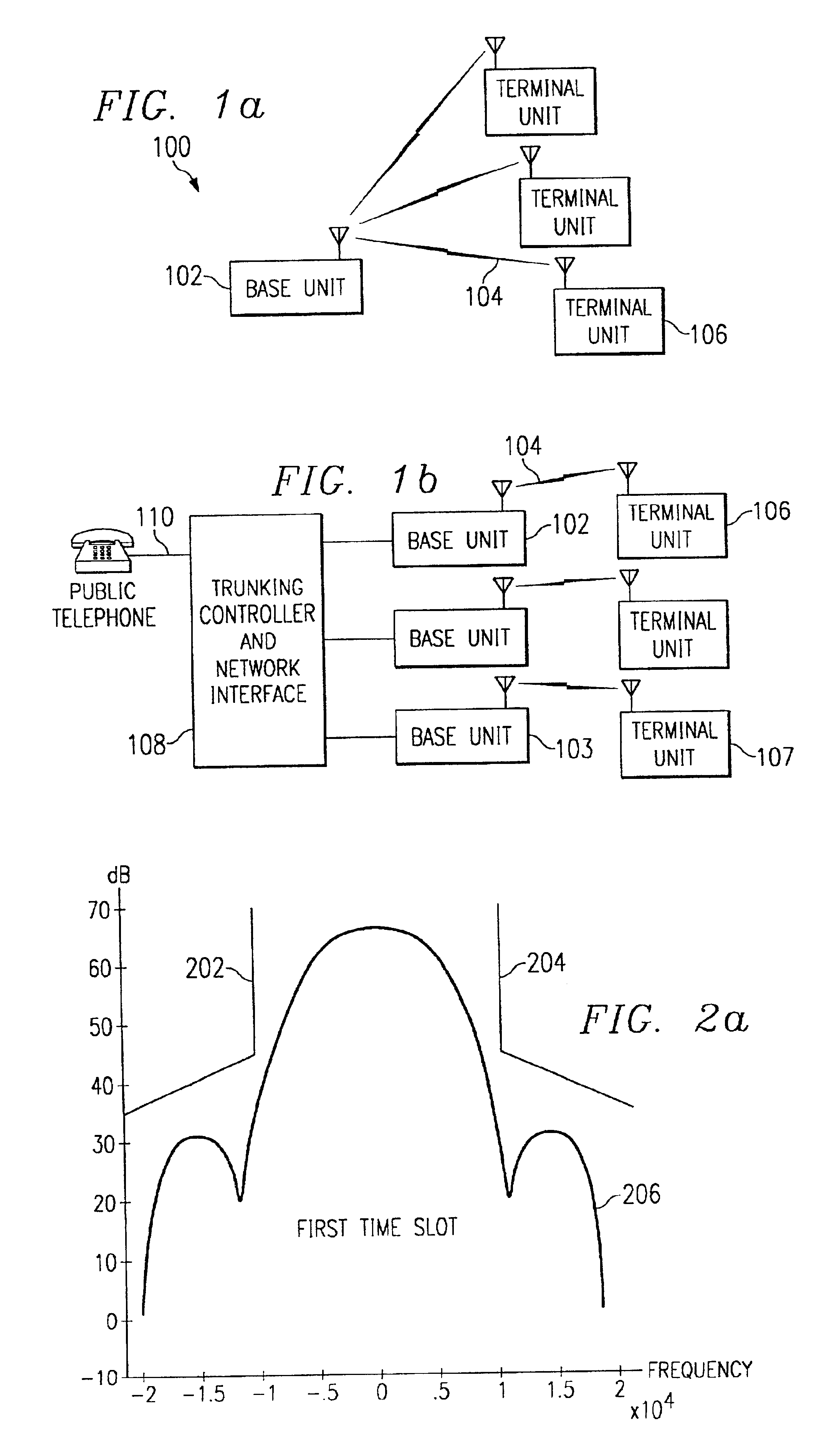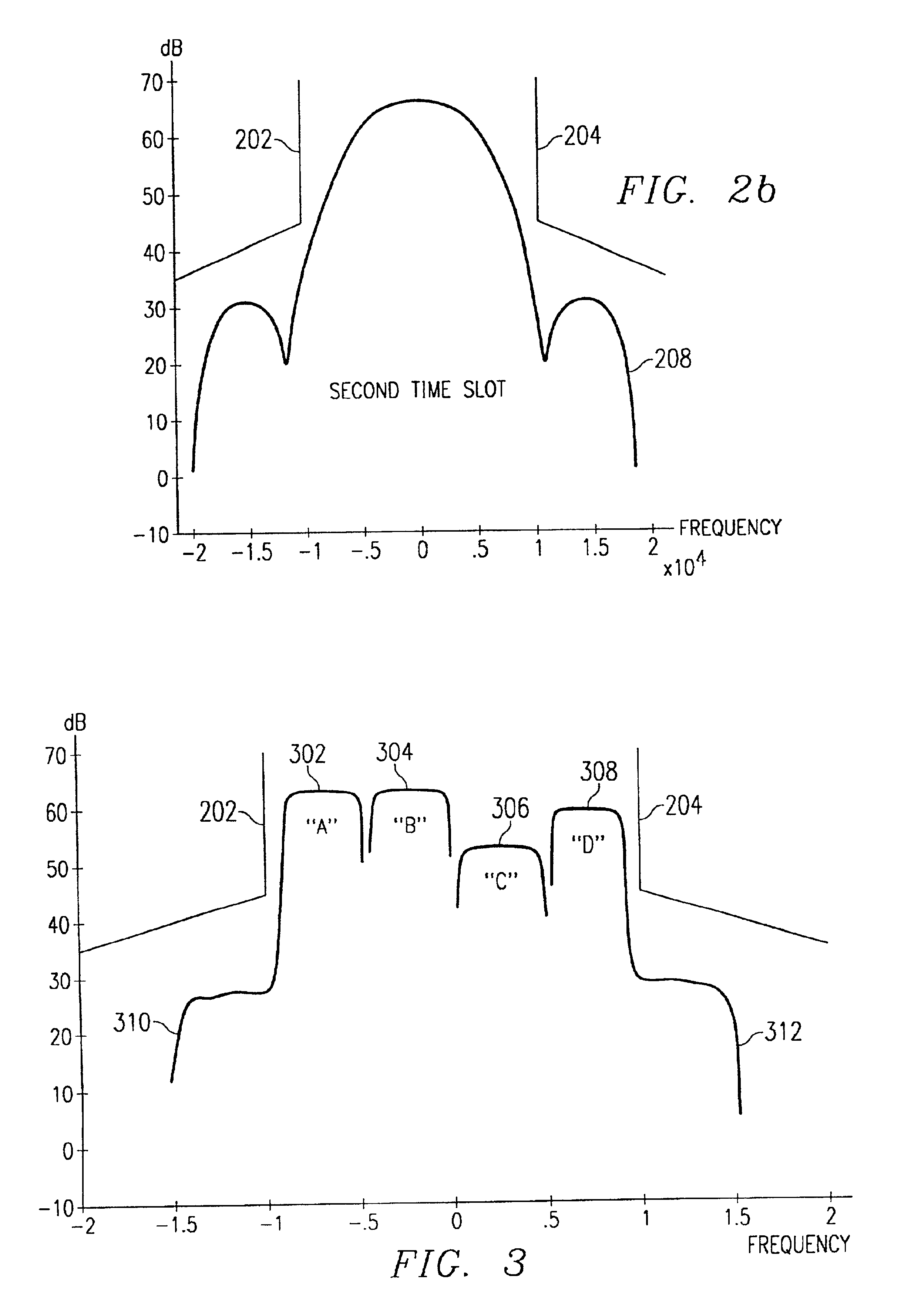Bandwidth efficient QAM on a TDM-FDM system for wireless communications
a tdm-fdm and wireless communication technology, applied in the field of wireless communication, can solve the problems of not optimizing the spectrum efficiency, and reducing the reliability of communication, so as to achieve the effect of maximizing the spectrum efficiency and not increasing the capacity of the channel
- Summary
- Abstract
- Description
- Claims
- Application Information
AI Technical Summary
Benefits of technology
Problems solved by technology
Method used
Image
Examples
Embodiment Construction
FIG. 1(a) illustrates an exemplary radio system 100. System 100 could be a cellular telephone system, a two-way radio dispatch system, a localized wireless telephone or radio system or the like. Base unit 102 can communicate over transmission medium 104 to one or more terminal units 106. Transmission medium 104 represents the wireless communication spectrum. Terminal units 106 can be mobile units, portable units, or fixed location units and can be one way or two way devices. Although only one base unit is illustrated the radio system 100 may have two or more base units, as well as interconnections to other communication systems, such as the public switched telephone network, the internet, and the like. In the preferred embodiment, the system provides for full duplex communications. The teachings of the present invention, however, apply equally to half duplex systems, as well as to time division duplex, simplex and other two-way radio systems.
In some preferred embodiments, each base ...
PUM
 Login to View More
Login to View More Abstract
Description
Claims
Application Information
 Login to View More
Login to View More - R&D
- Intellectual Property
- Life Sciences
- Materials
- Tech Scout
- Unparalleled Data Quality
- Higher Quality Content
- 60% Fewer Hallucinations
Browse by: Latest US Patents, China's latest patents, Technical Efficacy Thesaurus, Application Domain, Technology Topic, Popular Technical Reports.
© 2025 PatSnap. All rights reserved.Legal|Privacy policy|Modern Slavery Act Transparency Statement|Sitemap|About US| Contact US: help@patsnap.com



